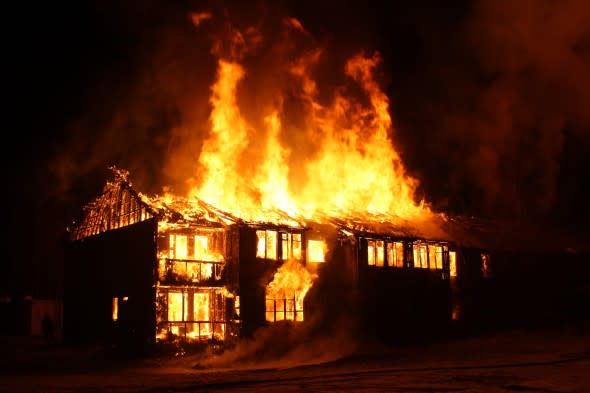What can homeowners in high-risk areas do if they're struggling to obtain, keep wildfire insurance coverage?
As instances of devastating wildfires appear to increase in recent years, homeowners in high-risk areas, especially in the western United States, could potentially find themselves struggling to find or keep insurance coverage.
Earlier in 2018, the California Department of Insurance (CDI) reaffirmed this reality, stating that the rise in number and intensity of wildfires was making it more difficult for homeowners in the state to get insurance for their properties, and homeowners looking for new or replacement policies might have to pay more money or search even harder for coverage, according to the Insurance Journal.
"Since the Valley and Butte wildfires [of 2015], the CDI has received increased complaints, evidence and feedback from consumers, consumer groups, public officials and other stakeholders that homeowners' insurance coverage in the wildland-urban interface is increasingly difficult to obtain and, if available, is unaffordable to many that need it," the CDI stated in a report released in January.
A report from the CDI revealed that complaints between 2010 and 2016 from homeowners in the wildland-urban interface who were dropped by their insurers more than tripled, and grievances about skyrocketing premiums also shot up by 217 percent.

On Dec. 12, 2018, California Insurance Commissioner Dave Jones announced that insurance claims from the state's recent wildfires have already exceeded $9 billion, with the numbers expected to climb as additional claims are filed and processed.
With approximately over 1 million homes in California deemed to be high risk for the threat of wildfires, more insurance companies are choosing not to renew policies of those that live in areas considered too risky to cover, the Los Angeles Times reported.
However, for those living in high-risk areas or planning to move to such locations, there are options.
"Homeowners in high-risk areas should have a great understanding of their current policy," said Jason Austin, founder of Virginia-based insurance consulting firm, J.L. Austin Consulting.
"If a homeowner should find themselves with a cancellation notice, they should first shop around and find other major companies that are still accepting new customers," Austin said.
The homeowner should next contact his or her mortgage company to ask for suggestions on insurance companies that the mortgage company uses, according to Austin.
The Insurance Information Institute recommends reaching out to neighbors to see which insurers they use and getting the names of agents who might be knowledgeable about the wildfire risks your neighborhood could face.
"Homeowners who are struggling to find insurance can also call their state department of insurance," said New York City-based insurance analyst Virginia Hamill. "It will have a list of companies that cover homes in fire-prone areas."
The state insurance department might also be able to provide information on community groups that help homeowners with insurance problems, such as the Neighborhood Reinvestment Corporation.
"If they [still] can't obtain new coverage, he or she should contact their state and use the state plans that are available, [such as the California FAIR plan]," Austin said.
Fair Access to Insurance Requirements (FAIR) Plans were first made available in the 1960s to make insurance available in areas with abnormally high exposure to risks over which they had no control, according to the Insurance Information Institute.
"These plans are insurance pools that sell property insurance to people who can't get coverage in the voluntary market," the Insurance Information Institute's website stated. "FAIR Plan policies may cost more than private insurance and may offer less coverage, but they offer insurance protection where none would otherwise exist."
These plans may have dwelling protection coverage only, so customers may have to find supplemental coverage for liability and other needs, according to Austin.
For more safety and preparedness tips, visit AccuWeather.com/Ready.

